Color Management Resources
Exhibit of Virtual Human Saya - ColorEdge as an Eye to the Artist
Roundtable discussion with TELYUKA and Tsutomu Kojima.
This is a translation from Japanese of an article published on Shuffle by Commercial Photo on February 7, 2023. All rights reserved.
Photographs by Hideyuki Motegi.
In cooperation with Value Management Co. and Warehouse Terrada.
Saya is a virtual human with the appearance of a Japanese teenager created in 3DCG. Saya has attracted attention as a work of art that transcends the boundaries of CG with convincing realism. Saya’s creator, TELYUKA, and Tsutomu Kojima, who produced detailed exhibition prints of the 3D character, participated in this roundtable discussion.
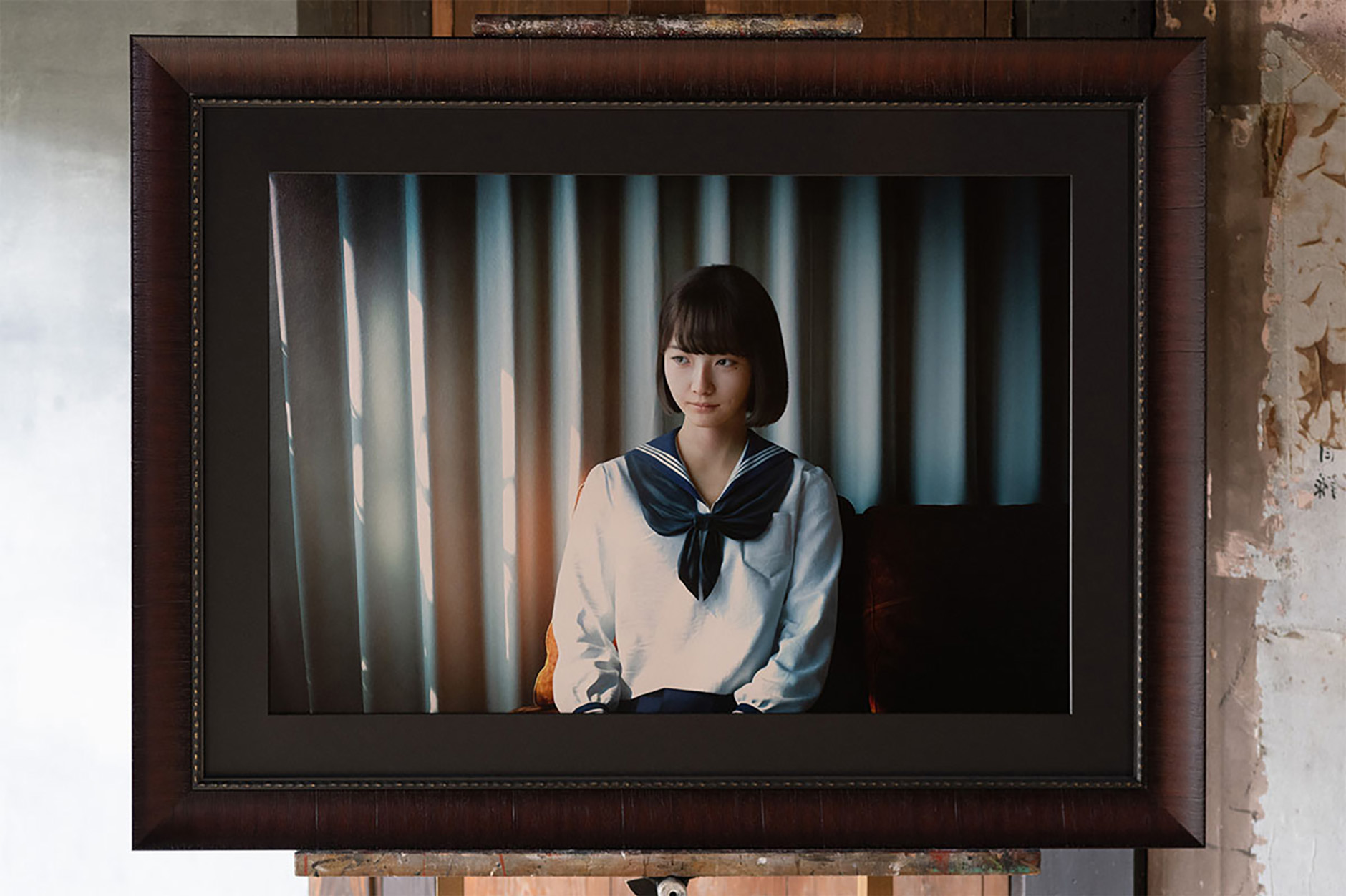
Two-dimensional print work of Saya: “Light between Spaces”
A Virtual Human that Feels Real
3DCG characters that look convincingly like real humans are called “virtual humans” and Saya is one of them. She looks so much like a human being that some say she successfully “crosses over the uncanny valley” - her realism is outstanding.
The virtual human Saya was brought to life in the form of a new two-dimensional printed art piece. The print was part of an exhibition titled “Threatening Realism,” held in an old residence in Takehara City, Hiroshima Prefecture, Japan and featured an impressive collection of realistic paintings and three-dimensional pieces.
The exhibiting artists are Saya's creators, CG artists Teruyuki Ishikawa and Yuka Ishikawa, who together as a couple form the unit TELYUKA and head all projects related to Saya. The print for the exhibition was produced by Tsutomu Kojima, a printing director at Toppan, and although their specialties lie in different industries (3DCG and printing respectively), all three of them use EIZO ColorEdge monitors for their work, so communication between them was smooth.
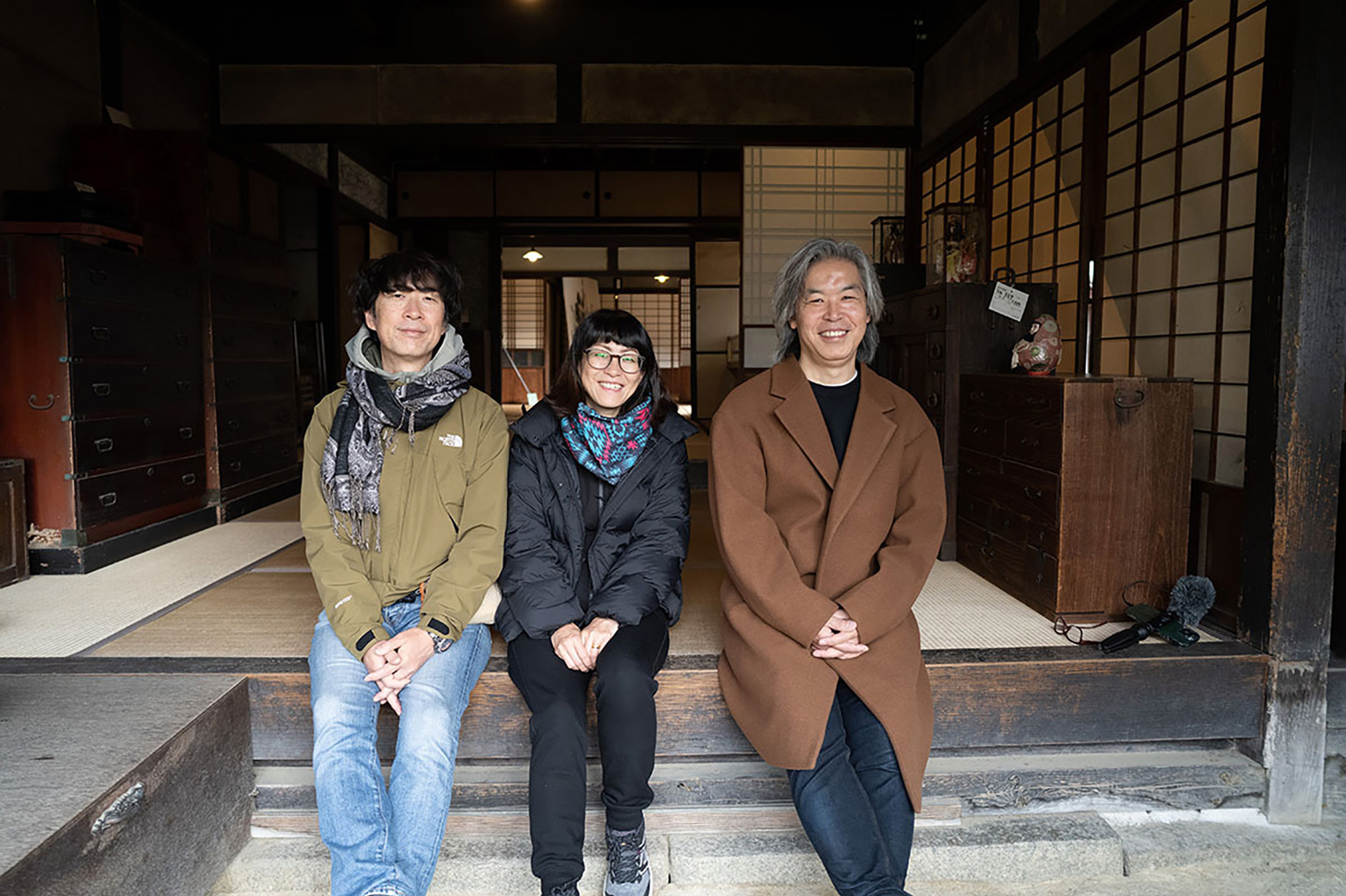
Left to right: Teruyuki Ishikawa, Yuka Ishikawa, Tsutomu Kojima
This article will present the roundtable discussion among these three artists. The theme: how they reproduced the sense of reality that Saya possesses in their 2D print work and how ColorEdge supported the process.
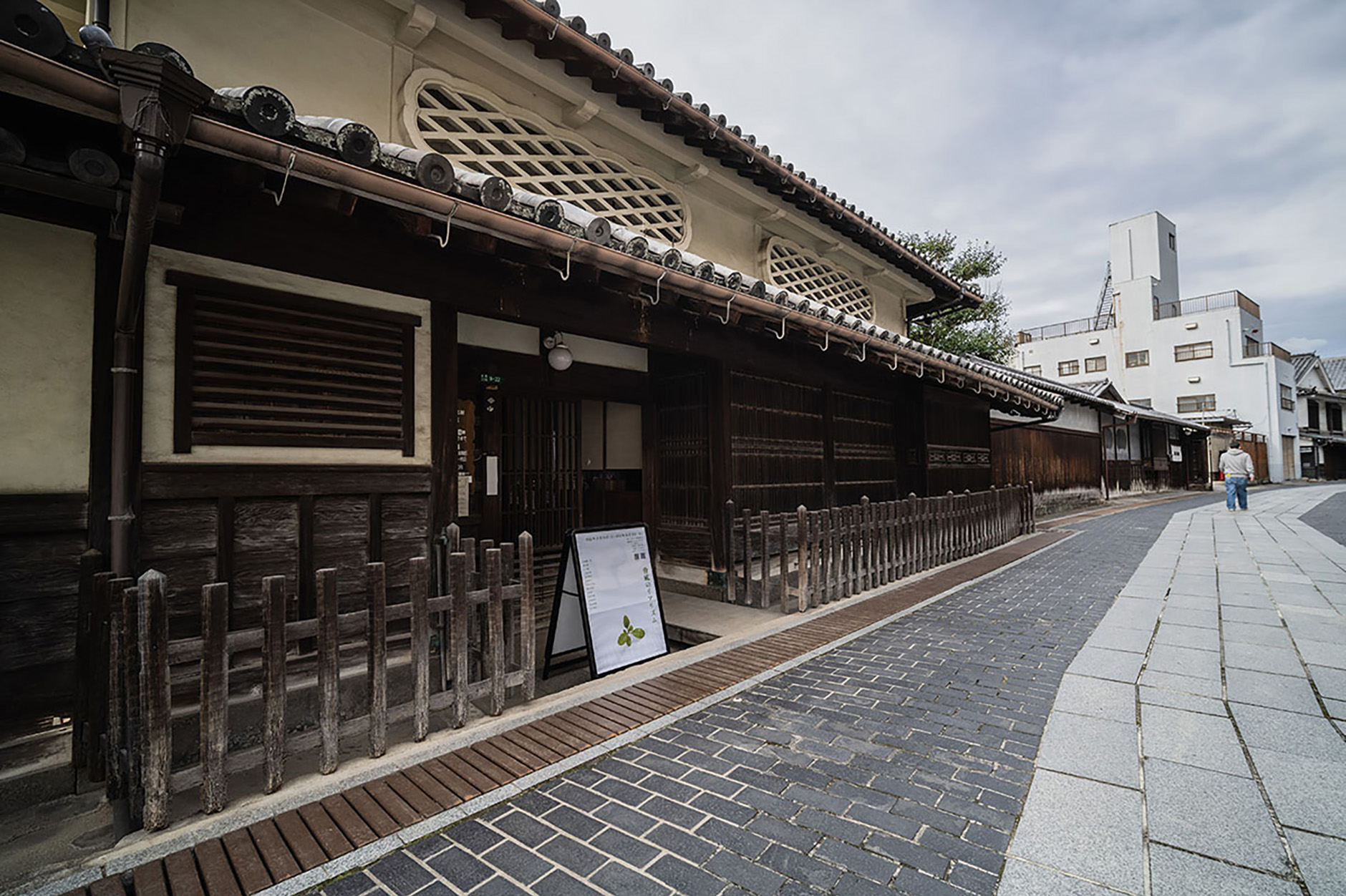
The former Matsusaka family residence where the “Threatening Realism" exhibit was held.
The discussion took place at the former Matsusaka family residence, the venue of the “Threatening Realism” exhibit. This building was the residence of a wealthy merchant during the Edo period. Old chests, hanging scrolls, and other household items were left untouched, invoking a feeling that we had somehow traveled decades back in time during the discussion.
As a supplementary note, this exhibition was held last fall (October 29-December 13, 2022) as part of the Takehara Art Project 2022, an initiative to utilize the historical buildings in Takehara City. It is in part an attempt to revitalize the town of Takehara and preserve its historical buildings by displaying artworks throughout the townscape’s conservation area to boost tourism.
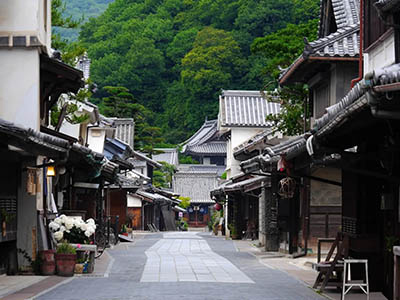 |
Takehara was a town that prospered in the salt manufacturing industry during the Edo period. The masters who ran the salt manufacturing business contributed to the development of the town by investing their private funds into building and education. This is the reason why the current townscape is known as the “Little Kyoto of Aki”. This event was held to express that spirit through contemporary art. |
Period: October 29, 2022 - January 31, 2023
Location: Takehara Townscape Conservation Area, Takehara City, Hiroshima Prefecture
Organizer: Value Management Co.
Sponsor: Takehara city and others
Cooperation: Warehouse Terrada
Saya in the “Threatening Realism” Exhibit
Before we jump into the roundtable discussion, I would like to get everyone’s thoughts on the “Threatening Realism” exhibit.
Yuka Ishikawa (Yuka): This is the first time for my work to be exhibited in such a historic building, so I am very excited. The theme of the exhibition is realism, and the synergy between each piece and the building gives them an amazing sense of presence.
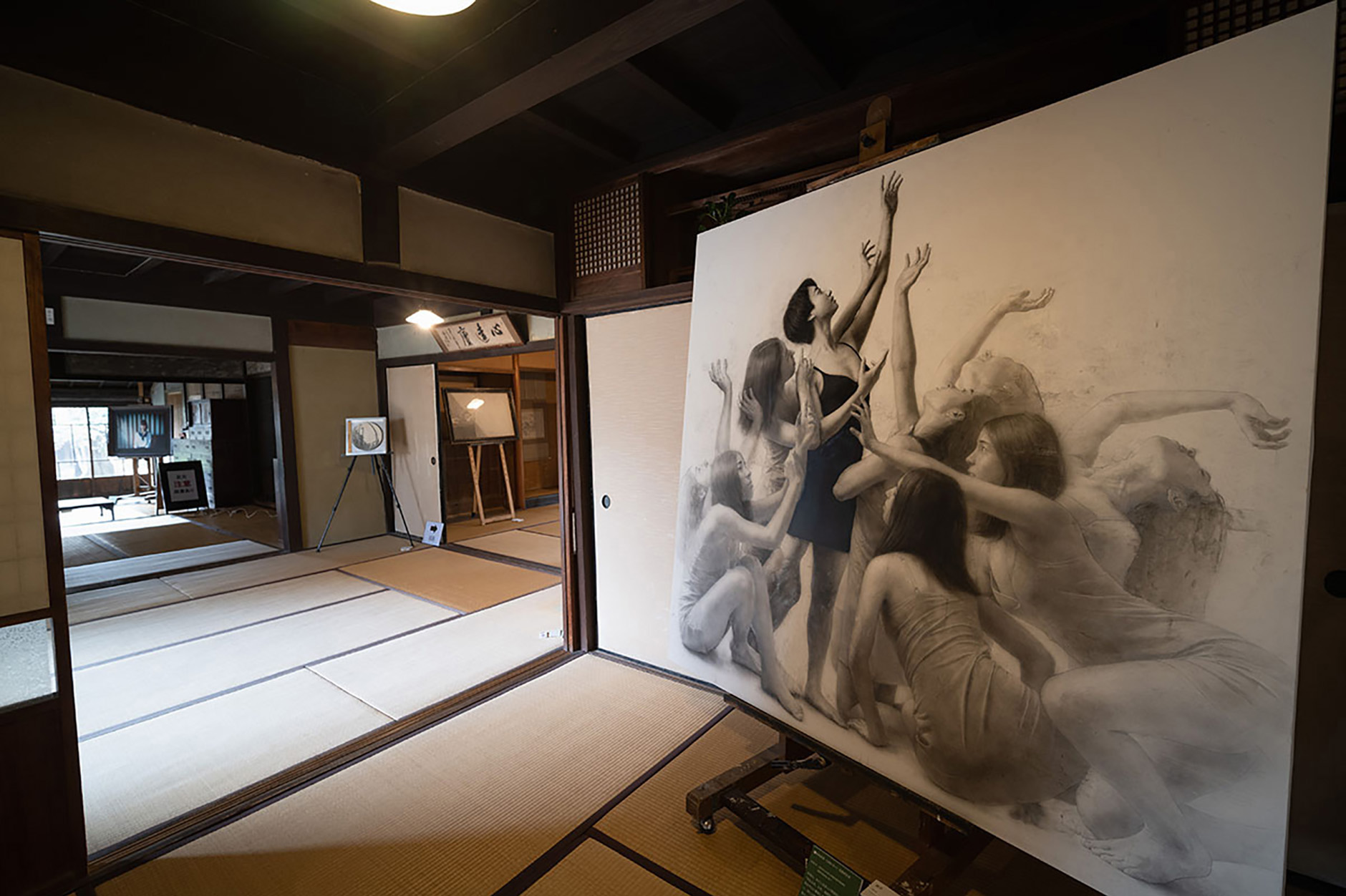
Large painting titled “Kikyuu” (Desire) by Naho Matsuo exhibited at the entrance.
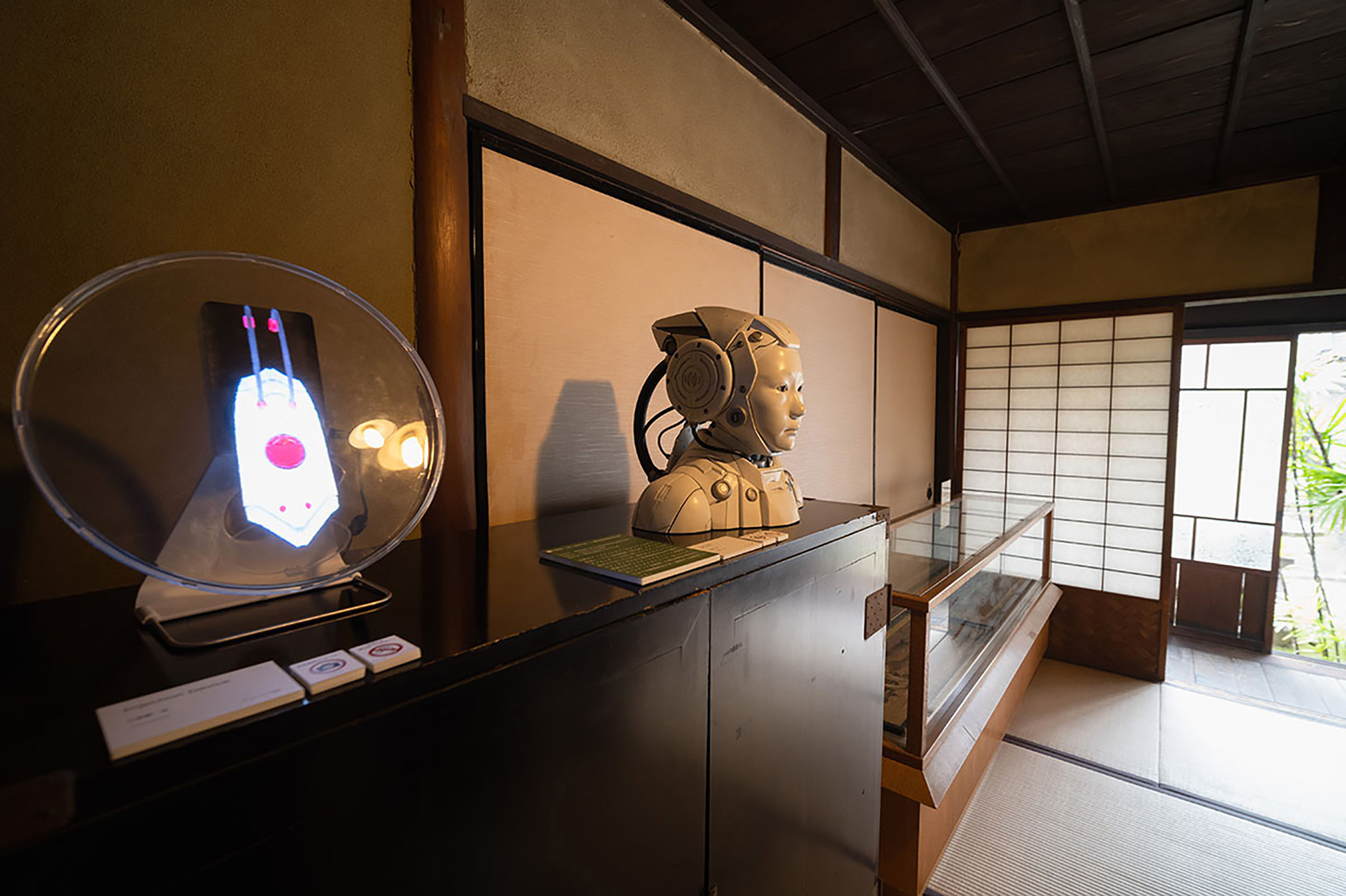
Futuristic designs by Kenichiro Ishiguro titled “Injection Device” (left) and “Yuuki” (right).
Teruyuki Ishikawa (Teruyuki): Each piece is enjoyable on its own, but even more so when you know its background. That’s the kind of exhibition this is. There are not only orthodox realist paintings, but also realistic-looking insects made of metal, busts of futuristic cartoon characters, and so much more that makes me want to know the background of each.
Kojima: This building goes back to the Edo period, so the space itself has a sense of reality. And the presentation of art placed in that space is wonderful. I think this is a special kind of exhibition that you cannot experience in an ordinary gallery.
The exhibits were placed in the available space throughout the building, including the entrance, tatami room, and living room, but TELYUKA's work, “Light between Spaces,” was displayed in a corner of the kitchen.
Yuka: I left the placement of the exhibits up to the organizers and I feel like they chose perfectly. There is a large glass door nearby, so the structure of the work is highlighted by light outside. It is as if the light from the real space is shining into it.
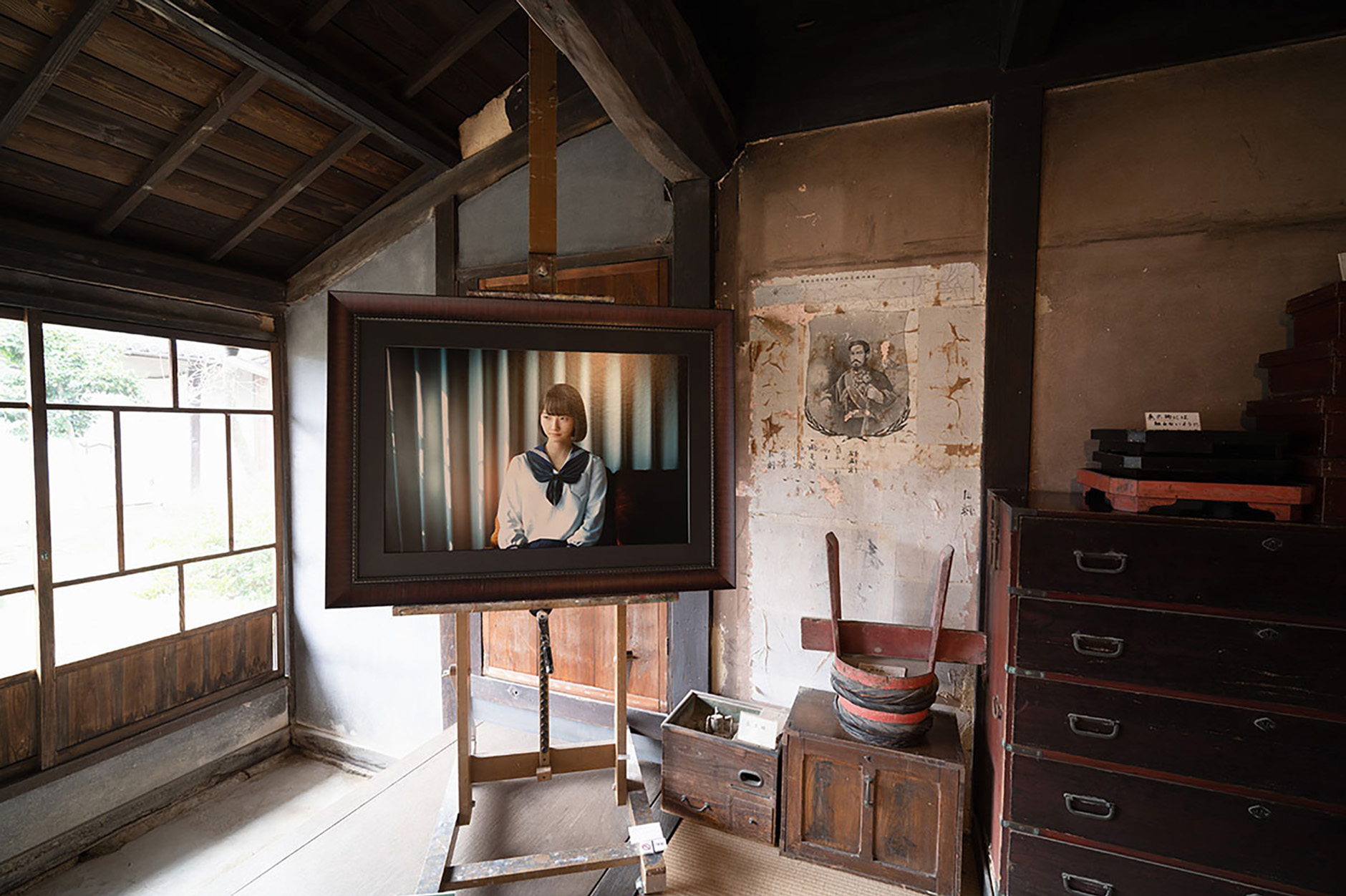
TELYUKA’s “Light between Spaces” displayed in the kitchen. Next to it is a portrait of Emperor Meiji.
Teruyuki: There is a courtyard on the other side of the glass door, and an earthen floor and tatami room on this side, so it truly is an “in-between space”.
Today, we brought a ColorEdge CG2700X 4K monitor to the venue to display images of Saya. What do you think about the print and how it is displayed on the monitor?
Teruyuki: We already use ColorEdge, but the CG2700X looks quite different. 27-inch 4K screens are packed with pixels, so they look much more detailed.
Yuka: It looks very fresh, and I can see colors and tones that I normally can’t with 2K – so clearly in fact that it makes me feel a little self-conscious.
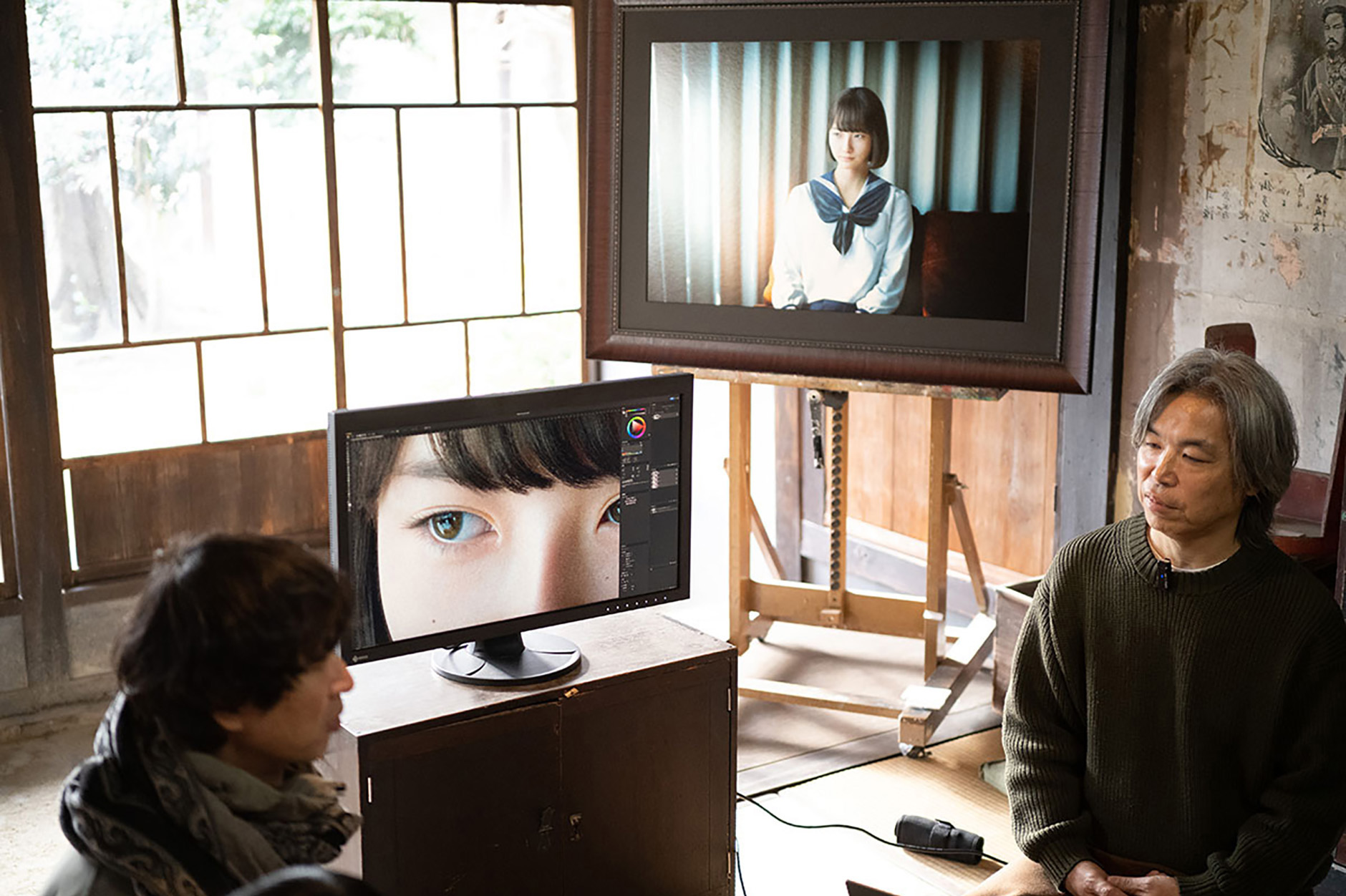
ColorEdge 4K monitor displaying an image of Saya.
Kojima: For the print, we used a German paper called Hahnemühle Photo Rag Metallic. Although it has “metallic” in the name, it does not have a reflective feel, but rather a gentle sheen. This paper was chosen by both of you. What do you think of it?
Teruyuki: We were given a choice of three different test prints, but I liked this paper at first glance.
Yuka: The moist look of her skin stands out, and her expression feels different on the monitor. Her skin looks so realistic. I feel that you have done a good job of bringing out Saya's attractiveness.
Kojima: When I made a test print on this paper, I had a good feeling that it was the right one. I thought it would work well with this image because it is metallic but has just the right amount of texture and does more to emphasize three-dimensional characteristics.
Can a CG Print Come Close to the Realism of an Oil Painting or Sculpture?
Now, I would like to ask you about the making of your work. First, could you give us an overview of the Saya project?
Yuka: It started out as a two-person independent production, and from there our aim was to figure out how to make CG feel real.
In 2015, it became a bit of a hot topic on SNS and since then we’ve been approached by various companies and universities and are now involved in a number of collaborations. It all started with a single still image, but then we added motion and then a voice. And more recently, we equipped her with an interactive AI.
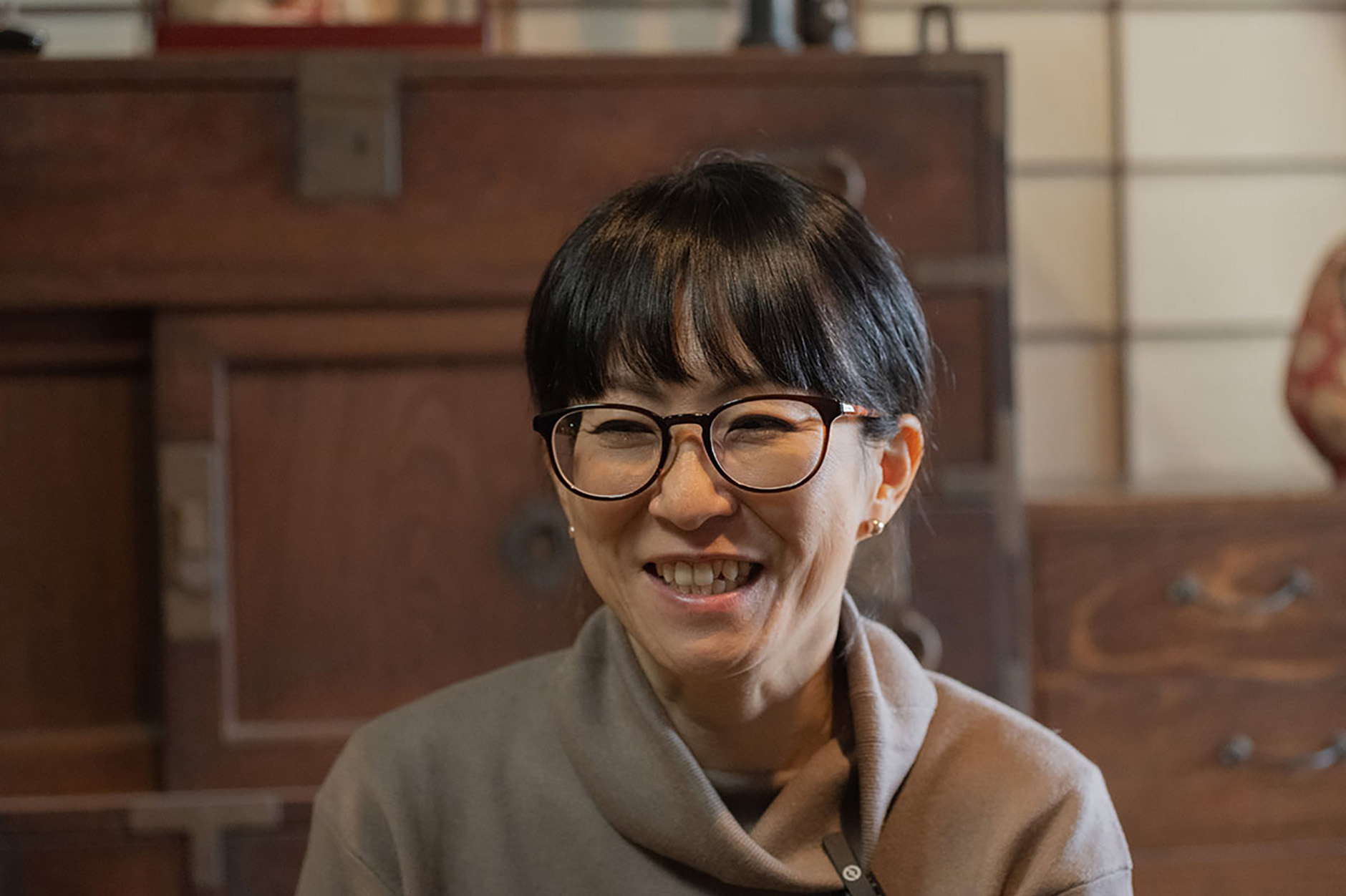
Mrs. Yuka Ishikawa
Yuka: I was approached about this exhibit by Professor Kenichiro Ishiguro of the Hiroshima City University Faculty of Arts, with whom I had known for some time. I had always wanted to try my hand at large-scale two-dimensional work, so this was the perfect opportunity.
The theme of this exhibition is “realism”, but it is hard to compete with the sense of reality that oil paintings and sculptures create, for which I have a very strong admiration for. I thought it might be possible to create a CG print that could match the realism expressed in oil paintings and sculptures, so I consulted with a friend of mine at Toppan. I did not know Mr. Kojima at that time.
Kojima: I have known about Saya for a long time, so when the idea of this project came to me, I was both surprised and happy. I got a little excited.
I think it was in August when I first met TELYUKA. At the time, I asked them about the keyword “realism” and even after our meeting was over, I was still thinking about that word…
I thought about how to create a realistic impression when putting the image on paper and selected several print papers that would suit the pattern. The aforementioned metallic, matte, and semi-gloss – these were the three types that I suggested.
Teruyuki: It is very interesting that an image can be expressed so differently depending on the type of paper. This open up new possibilities for us to explore with Saya now.
Common Ground between 3DCG and Printing: Pursuing Reality
I would like to explore the keyword “realism” a little further. For example, oil paintings don’t seem to have much detail up close, but from a distance, they look realistic, right? What is it exactly that gives them that sense of reality?
Teruyuki: I think one of the most important things to consider is whether or not a piece has a sense of weight. The CG world has no gravity, no air, and no flow of time, so if you try to create something without thinking, it will inevitably look lacking. Therefore, each creator must add an element of weight according to his or her own senses. An example would be to add spots or smudges.
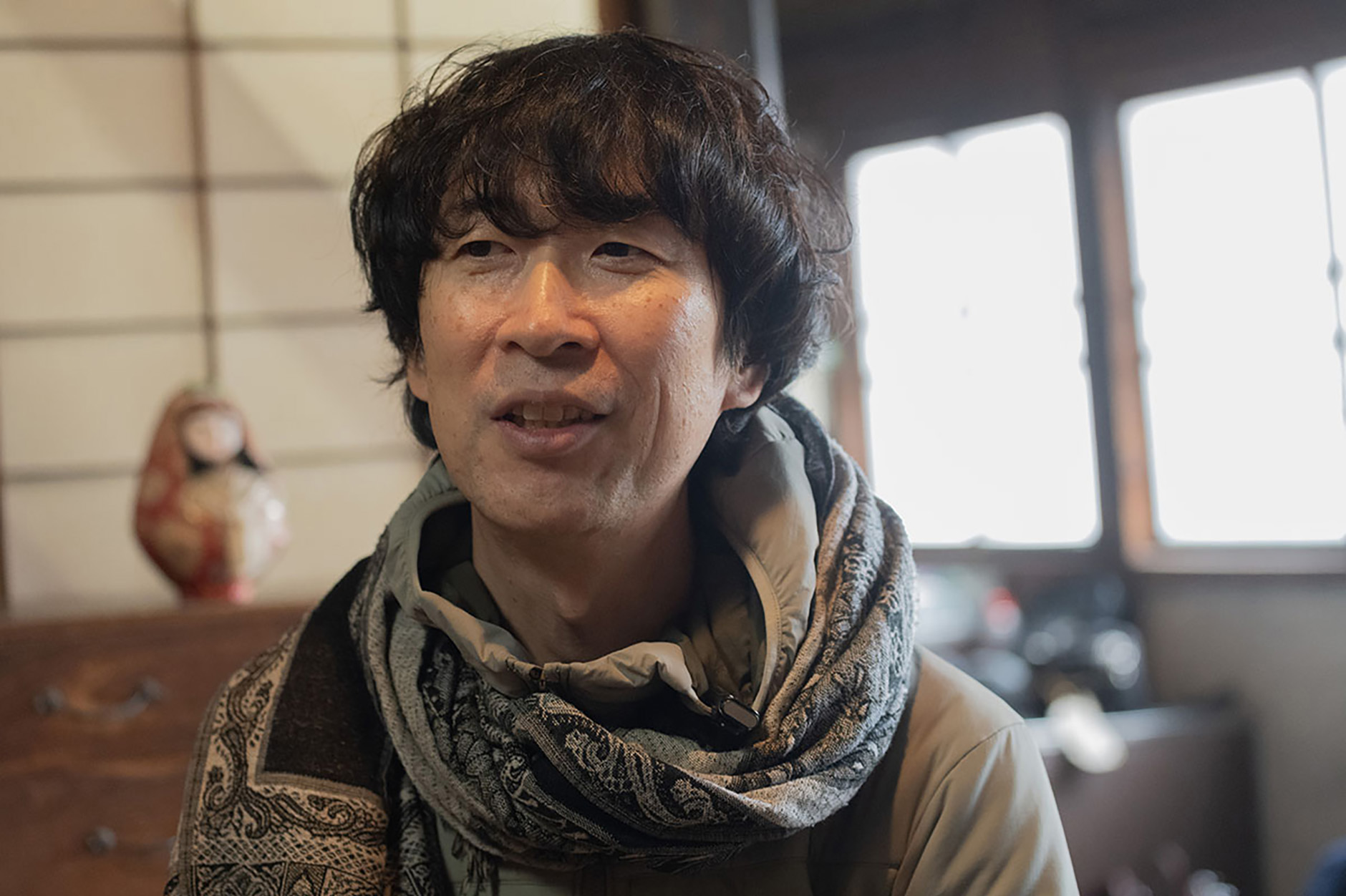
Mr. Teruyuki Ishikawa
Kojima: I see. It’s similar in printing. For example, skin tones are created by using primarily yellow and magenta, and cyan is added to “muddy” the color. I think the addition of that “muddy” component is what helps give is a stronger sense of realism, or to put it another way, a sense of noise. I think this is what is meant by “realism”.
Yuka: Noise is normally invisible to the eye, but that is why it is so important. I think it is noise that ultimately shows the difference in a CG artist’s skill.
Kojima: I used to work on cosmetics posters, and I often retouched the skin of models. People tend to think that it is good to make a women's skin smooth and silky, but the most difficult part is to control the noise well enough to make the skin look natural and beautiful while retaining a realistic texture. In this regard, Saya's skin is very natural, and I thought the way you created the data was masterful.
Teruyuki: I am thrilled to know that a professional printer like you recognizes that part of our process.
Kojima: The skin also has different hues in the light and shadow, and there are subtle fluctuations. I feel that these parts of the image are very rich in color. I wanted to emphasize those nuances when I put the image on paper.
Yuka: It was very difficult to decide which direction to take with the skin color. My preference was for a yellowish or pinkish tone, but I also thought that a little more blue would give a sense of reality, so I was very torn.
Kojima: The difference in the color temperature of the light is reflected in the skin very well. I think it is very realistic.
ColorEdge is Like an Eye to the Artist
In summary, adding noise and color fluctuation, which require delicate and subtle adjustments, are important in expressing a sense of realism. I think this suggests the performance of the monitor is incredibly important.
Kojima: I think you are right. I worked with the same CG2700X that you see here when I made this print, and it was very easy to make subtle adjustments in color and tone. The output looks almost identical on paper as it does on the screen, and the nuances of the inkjet are accurately reproduced on the monitor.
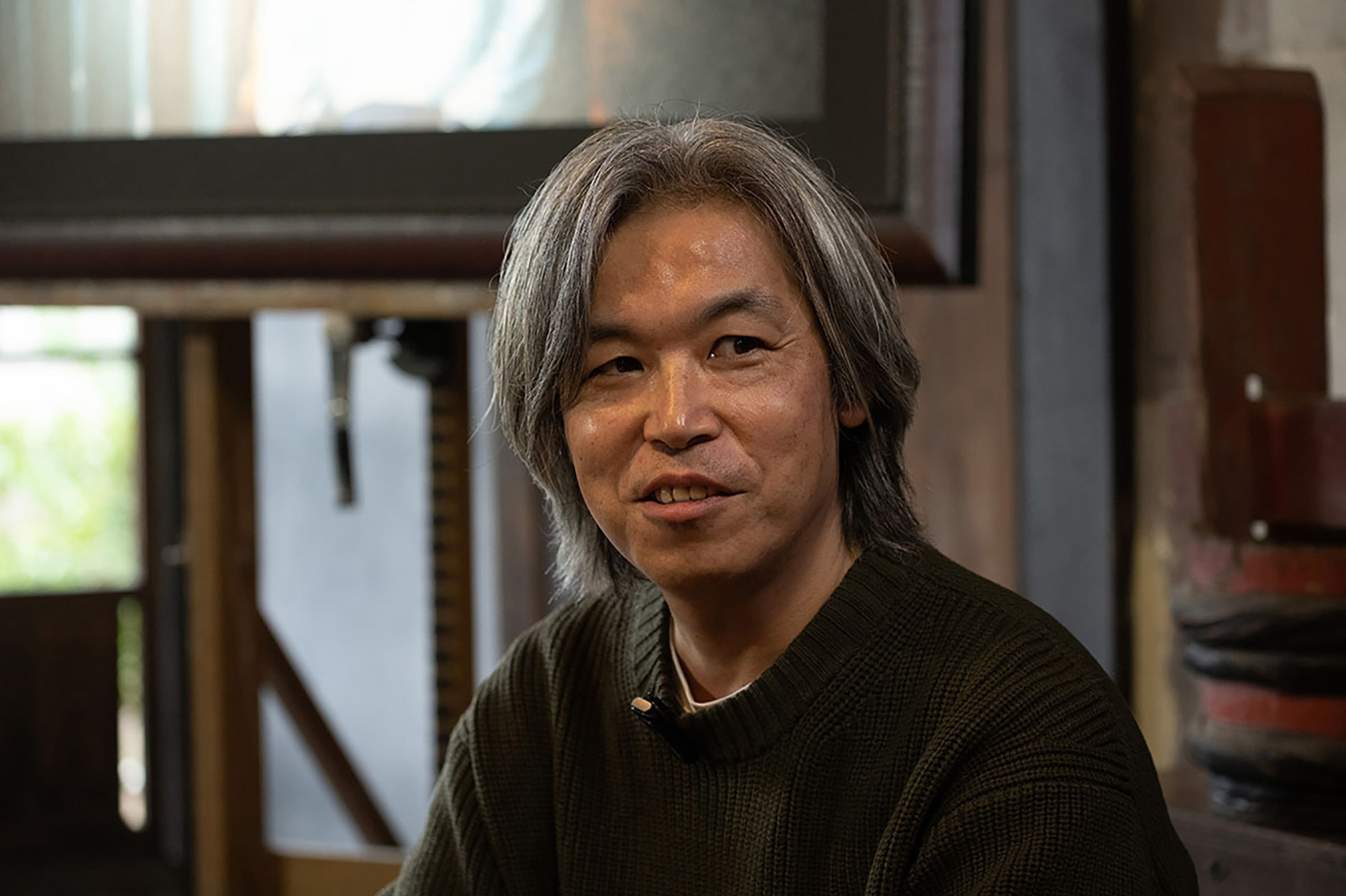
Tsutomu Kojima
Teruyuki: With the CG2700X, even when you get up close to the screen, you don't feel like you’re looking at pixels. It is more like looking at a real object with the naked eye rather than a computer screen.
Kojima: The pixel pitch is as low as 0.155 mm, so I think it might be impossible to distinguish each pixel with the naked eye.
Yuka: When I was first creating my work, I wished I had a 4K monitor. The resolution and the way it looks are different from a 2K monitor, and the focus is also very different. With such a difference in the amount of information, a 4K monitor will be indispensable for CG creators in the future.
Kojima: When did you become ColorEdge users?
Teruyuki: About 10 years ago. At that time, we were working on VFX for movies. The industry as a whole did not have a grasp on color management, so the colors were different on everyone’s monitor. This made it very difficult to match the colors when compositing 3DCG and live action.
Eventually, while I working on a live-action film, I was asked to install ColorEdge for the entire VFX staff, which I did out of necessity. This meant that everyone was viewing content on the same monitor with the same colors, which greatly improved work efficiency. Now I feel that ColorEdge has become a common language in the video industry.
Kojima: What you just said made me think that it is the same everywhere. In the printing industry where I work, the monitor used to be less important. In the past, craftsmen could imagine the final finished color by looking at the CMYK values, so they did not pay much attention to the monitor. But then, about 20 years ago, more and more projects were submitted as digital data, and color management became important.
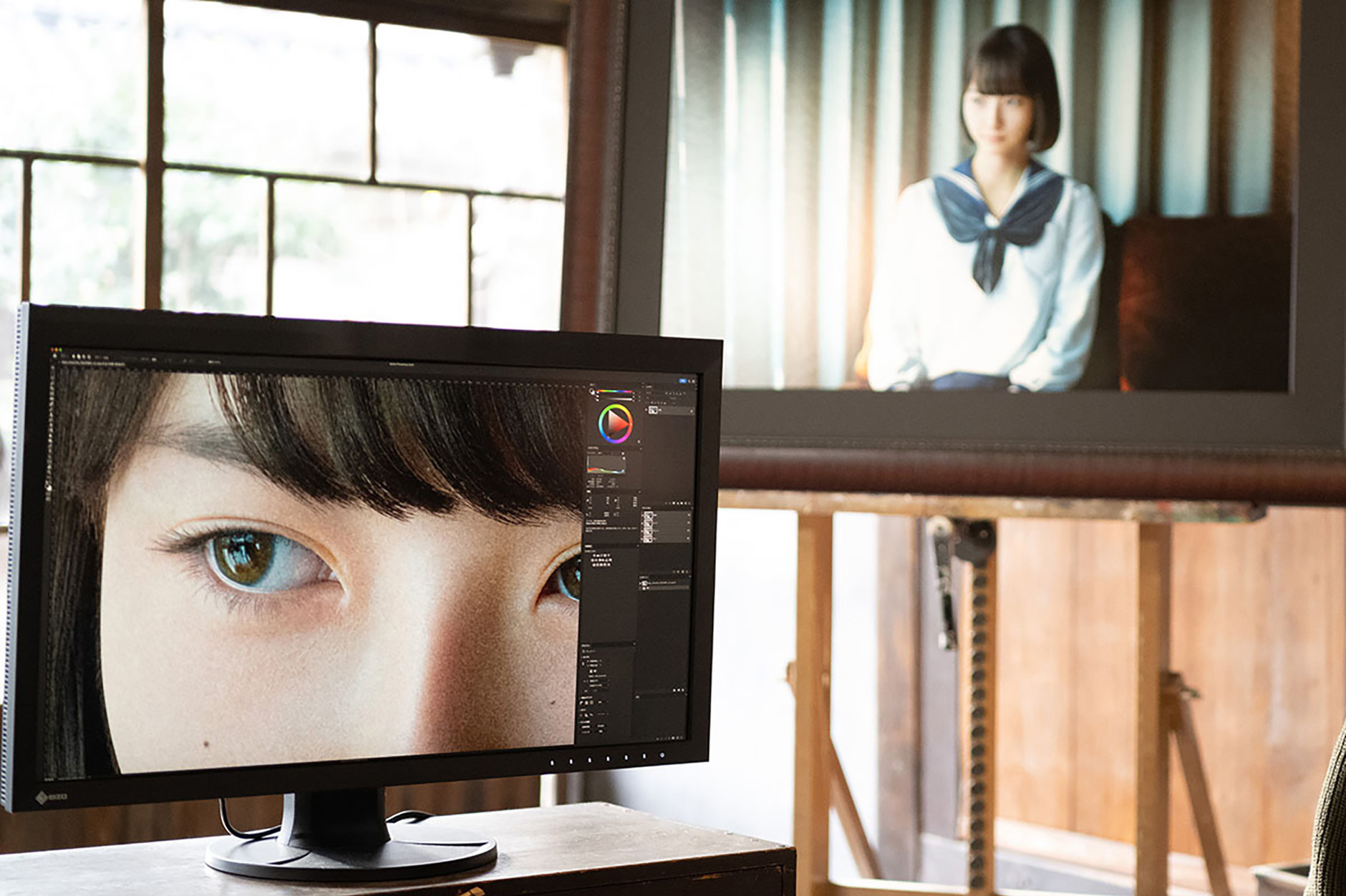
ColorEdge CG2700X
I see that color management and ColorEdge are deeply connected in all industries. For my last question, what does ColorEdge mean to you?
Kojima: I think the ColorEdge is like an artist’s eye. Although I am not an artist, I can see the same things as an artist through the ColorEdge. This was my first time working with TELYUKA and I feel that we were able to create such a highly precise piece because we shared an eye through ColorEdge.
Yuka: Yes, we were able to exchange information through ColorEdge, so our collaboration went smoothly, and I feel that Mr. Kojima’s commitment and our ideas meshed well. I think it was thanks to ColorEdge that we were able to release Saya’s art.
Teruyuki: Of course, it would be better to have knowledge of color management, but as a creator, I want to concentrate on creativity. I would rather leave such problems to someone else, and if it can be solved with the right equipment, so much the better. If you are a creator, you should invest in your tools, and I think ColorEdge is a monitor that meets expectations.
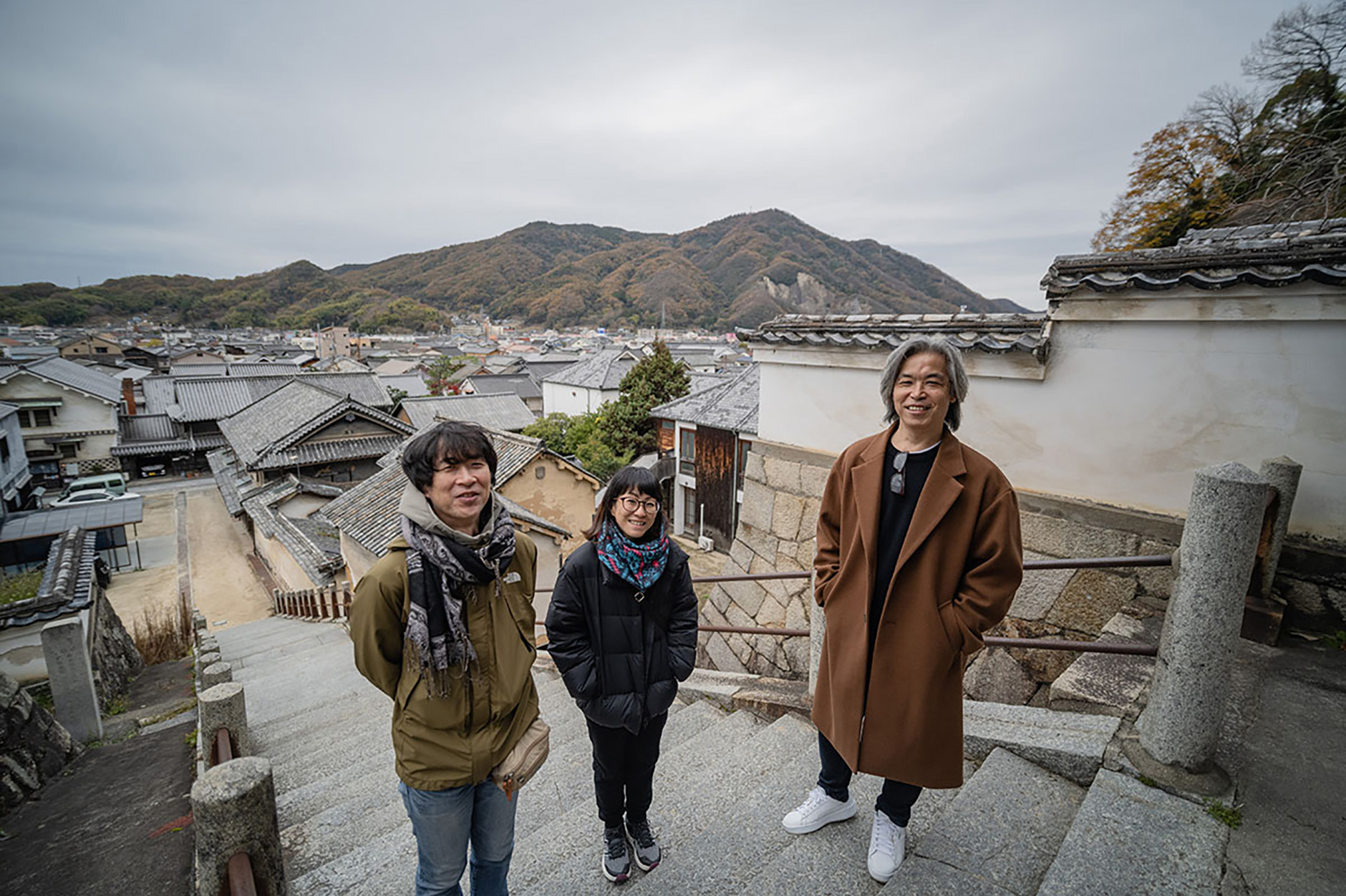
After the roundtable discussion, the three participants strolled through the town of Takehara. Photo taken at Saihoji Temple, from a hill overlooking the town.
More Information
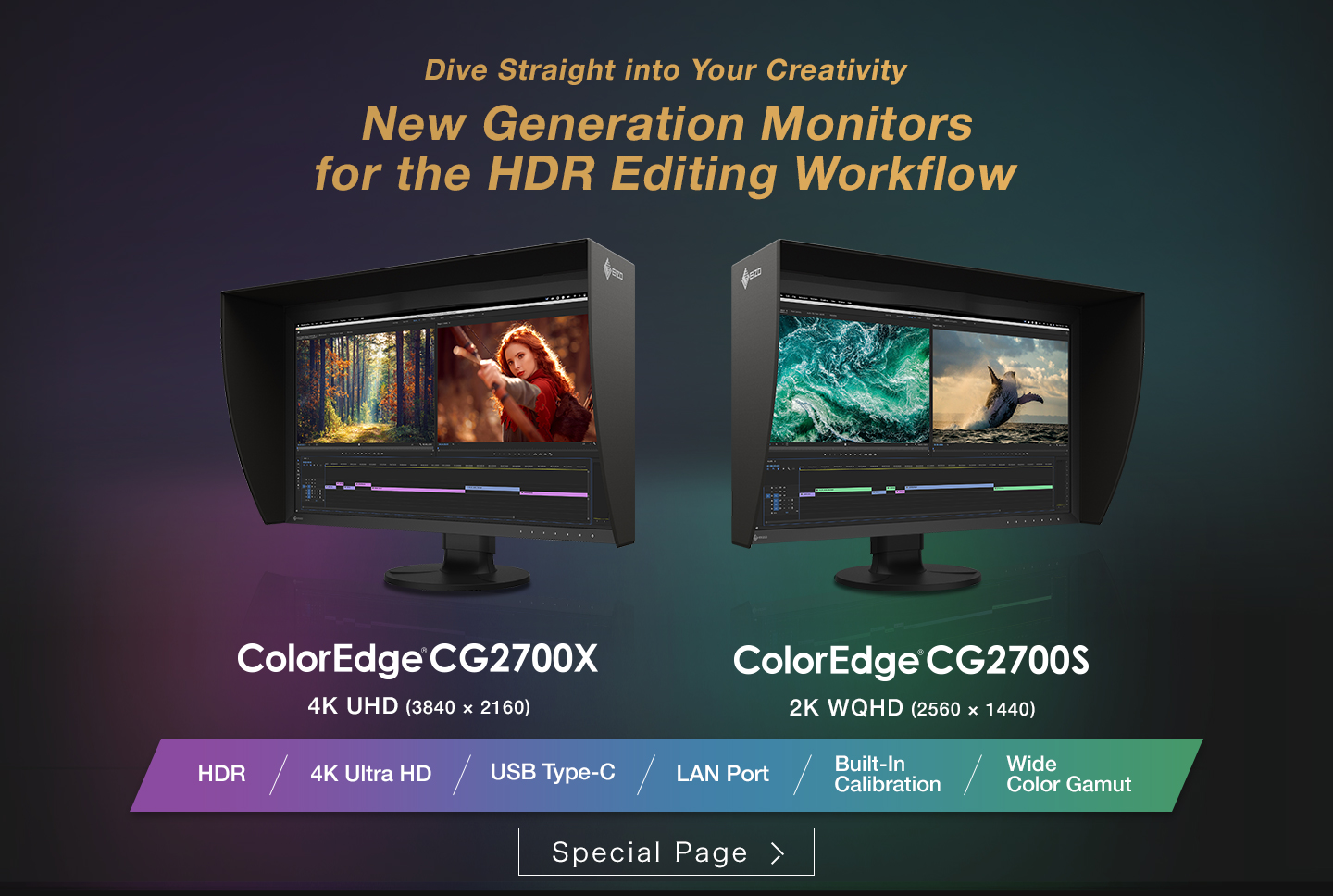 |
||
| ColorEdge CG2700X / CG2700S Special Page |
|
Tsutomu Kojima is a member of EIZO’s ColorEdge Ambassador Program, which showcases professional photographers, designers, filmmakers, and other creatives who are committed to inspiring and educating artists around the world of all levels. |
||
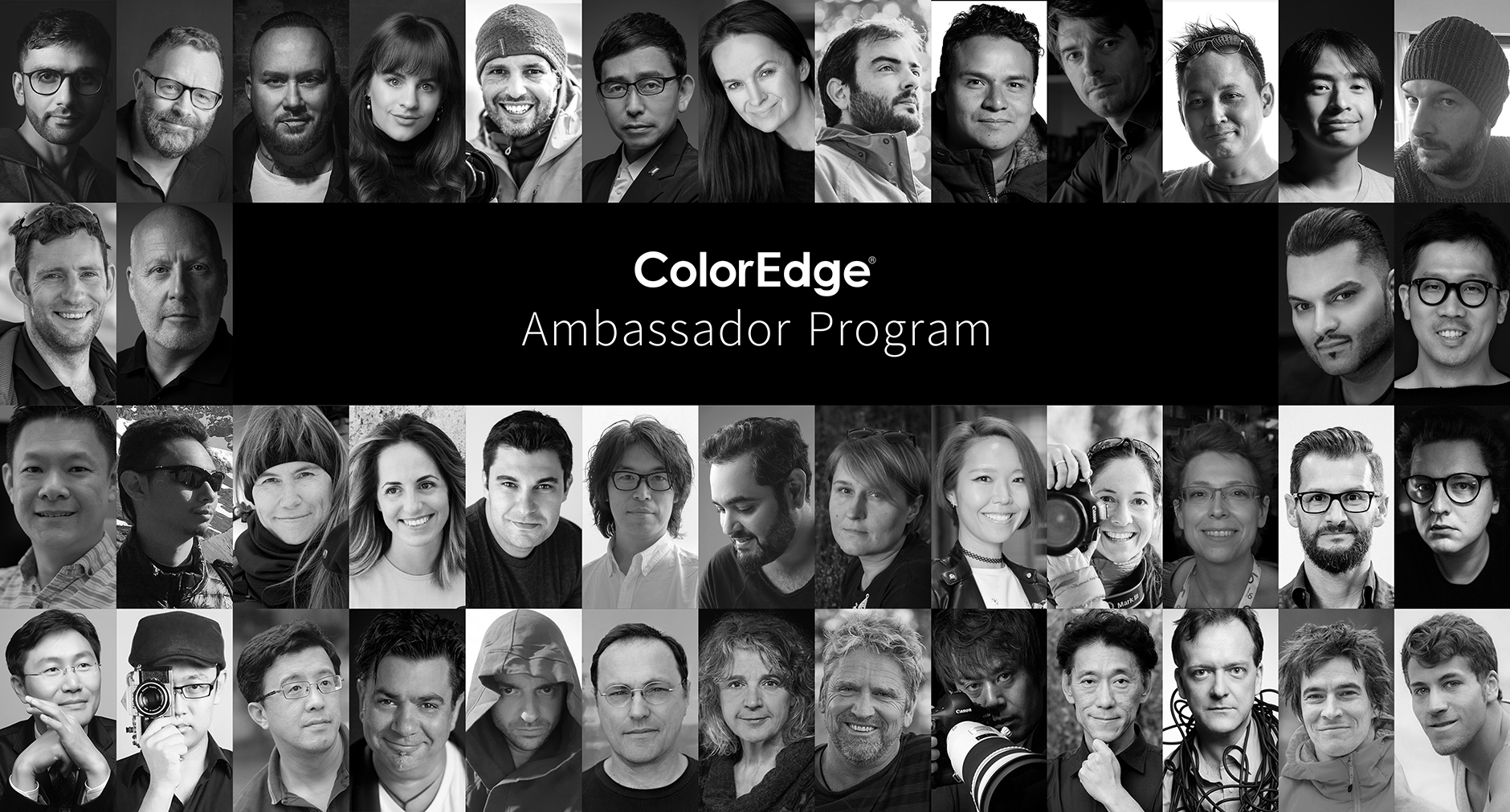 |
||
| ColorEdge Ambassador Program Website |
